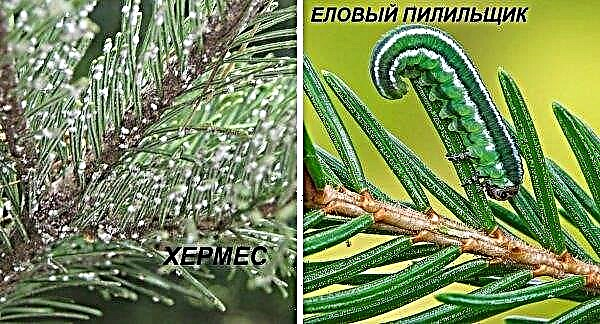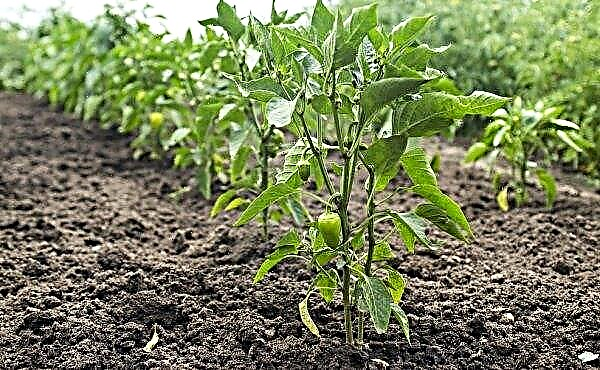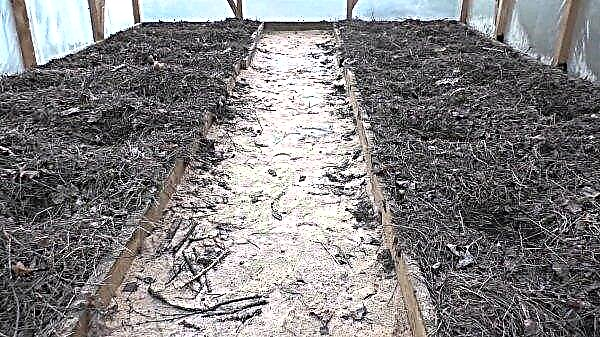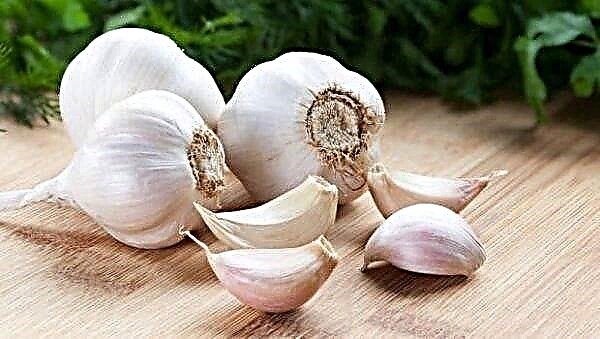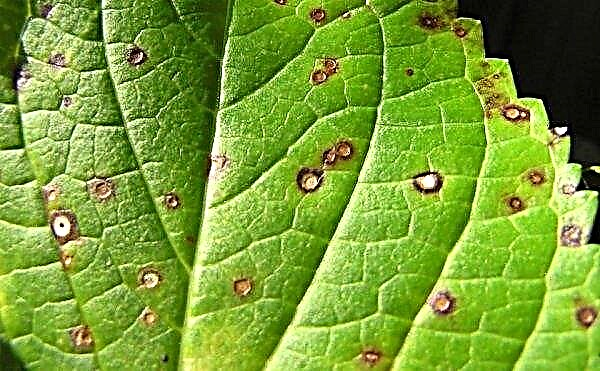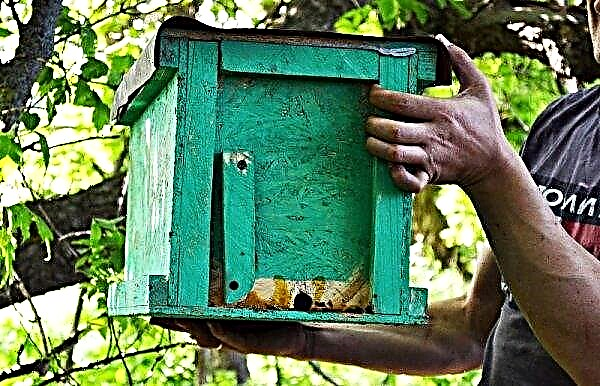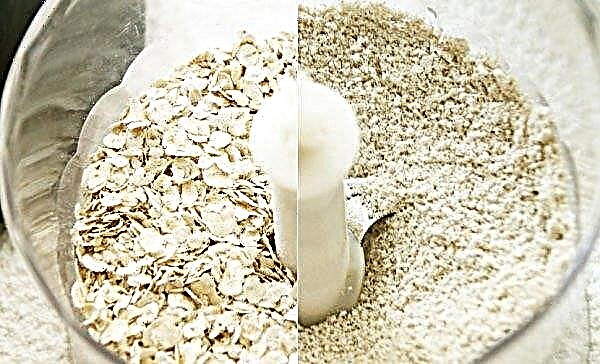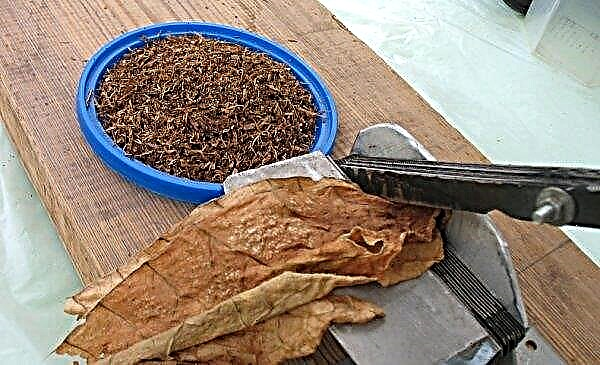One of the most common pests that eat the majority of crops grown in open ground is the caterpillar of the scoop. She can eat almost all garden crops, but especially likes tomatoes. What is the reason for the appearance of this pest on the site, what are the types of scoops and methods of combating it - this will be discussed in this article.
Why does a scoop appear on tomatoes
In everyday life, a scoop is also called a butterfly nightlight. This insect belongs to the order Lepidoptera and in appearance is very similar to an ordinary moth. Throughout autumn, winter and spring, pests spend in the chrysalis phase, hidden in the upper layers of the soil. With the onset of summer, a butterfly appears from the pupa.
The main reasons for the appearance of this pest in the area include:
- lack of autumn digging of the soil, as a result of which many insect pupae survive;
- a large number of weeds in the garden, which serve as food for the larvae;
- lack of soil disinfection before planting tomatoes;
- the remnants of last year's plants in the soil - can also store pest pupae;
- improper disposal of plants and fruits damaged by larvae.

The insect is small in size and gray in color, the wingspan does not exceed 4.5 cm. 5 days after the appearance, the butterfly lays eggs on tomato leaves, from which small caterpillars hatch after about a week. Their length does not exceed 3 cm, and the color is mostly green, but there are also pink or brown species. It is the caterpillars of the scoops that cause irreparable damage to tomatoes and other vegetables in the garden.
Important! Within 2-3 weeks, the larvae of the scoop eat everything that is nearby - from the leaves of tomato bushes to the tomatoes themselves.
After the transformation from the caterpillar to the adult butterfly, the process is repeated again.
In nature, there are several main types of scoops:
- linen (gamma) - the butterfly has a characteristic pattern on the wings in the form of the same name of the Latin letter, the caterpillars are green with yellow stripes on the back. The larvae of the scoop gamma eat not only the leaves of ornamental and cultivated plants, but also the leaves of bushes and trees;
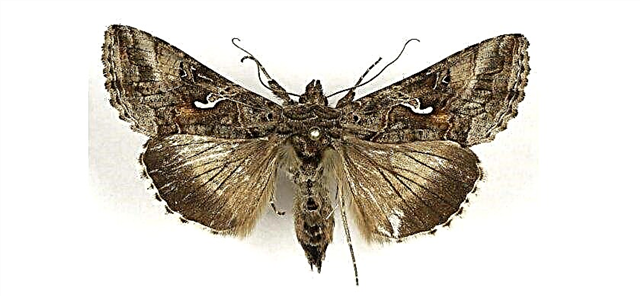
- winter - the wings of butterflies have a pattern of spots and stripes, the caterpillars are gray with a brilliant greenish tint. They feed on corn seeds, weeds and young shoots of plants in the garden;
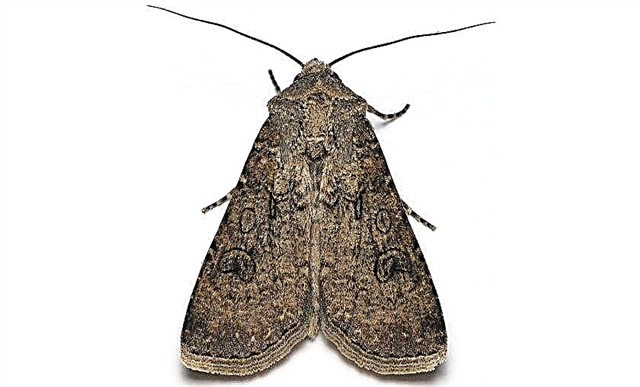
- cereal - the wings of butterflies are motley, they combine gray and brown colors, the caterpillars have a brownish-gray color with a yellow stripe on the back. They feed on grain and perennial herbs;
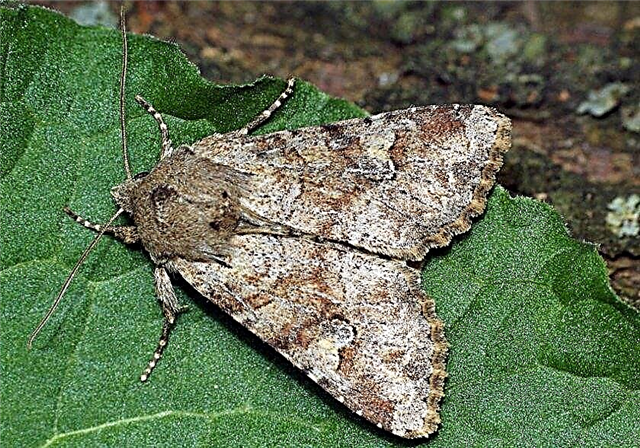
- gnawing - on the wings of butterflies a pattern in the form of an exclamation mark is clearly visible, the color is gray, brown or dark brown. Caterpillars have a gray color with a yellowish tint and an orange head. They feed on cereals and vegetables, as well as ornamental plants;
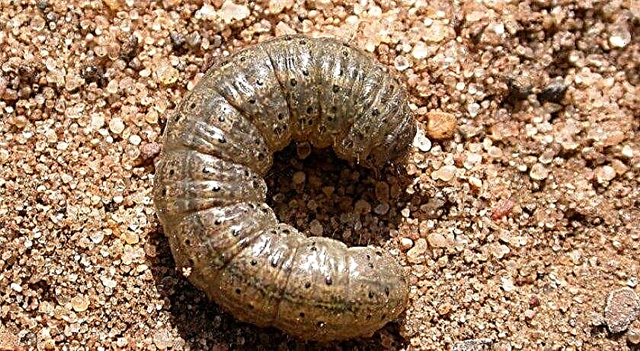
- greenhouse - butterflies have a light gray color, spots of various shapes are clearly visible on the wings, the larvae are gray with a dark strip on the back. Pests feed on leaves and fruits of all plants nearby;

- cotton - butterflies have a yellowish-gray color with dark gray stripes and spots, the larvae can be white, green, yellow or black. Caterpillars of a cotton scoop eat all kinds of plants;
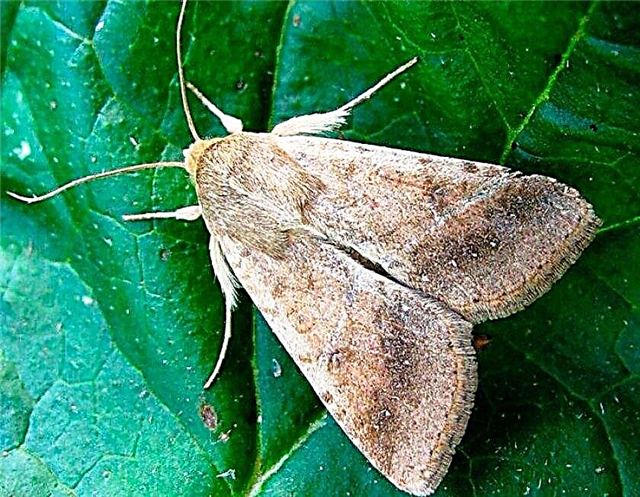
- agrippina - butterflies are beige or light gray with an intricate pattern on the wings, green caterpillars with black spots and light stripes on the sides. The pest eats the leaves of legumes;
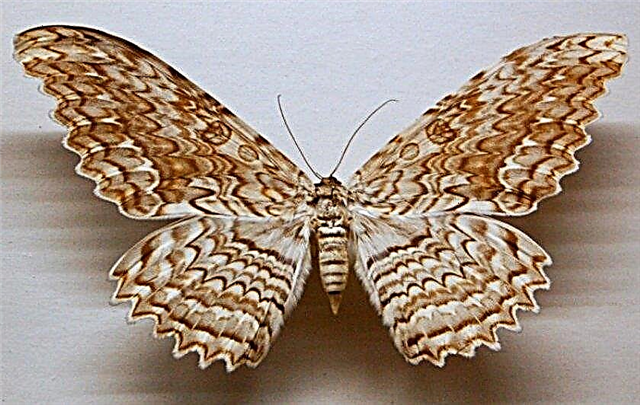
- pine - butterflies have a motley color of wings (from white to brown) with spots and lines of various shapes, green caterpillars with a wide white stripe. Larvae eat pine needles, young shoots and pine buds;
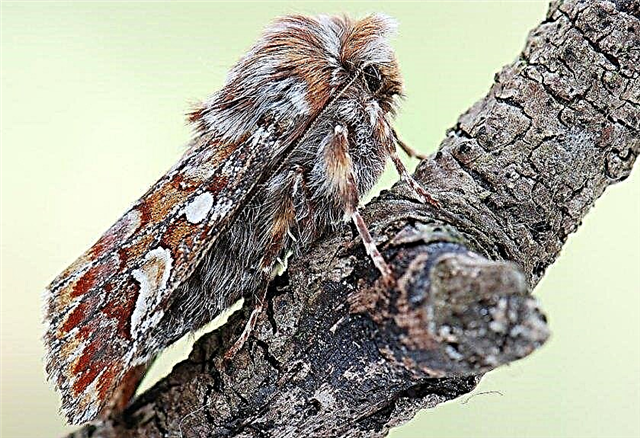
- garden (garden) - These include tomato, potato and cabbage scoops. Butterflies are dark or gray, the larvae are mostly green or gray. Eat leaves and fruits of cultivated plants.
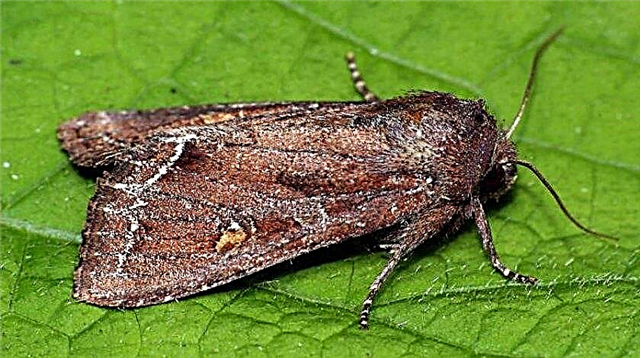
Signs of occurrence
Butterflies scoops fly at night, so you will not be able to notice them during the day. Caterpillars of the pest hide in the ground during the day and begin to eat the tops and fruits of tomatoes only with the onset of night. Therefore, it is quite difficult to detect the appearance of scoops in the garden.
Here are a few key signs:
- clusters of white round eggs appear on tomato leaves;
- the appearance of greenish or brown caterpillars on the leaves and stem, especially in the evening;
- small holes in the leaves, which increase over time, only large veins remain on the sheet;
- damaged buds or fruit ovaries;
- holes with eaten out pulp in tomatoes.
Did you know? Titania agrippina - the largest representative scoop. Butterflies of this species live in South America, and their wingspan can reach 28 cm.
What is dangerous scoop
Scoop caterpillars are one of the most serious crop pests. If you do not notice their appearance in the garden in time, then you can lose most of the tomatoes and other vegetable crops.
The danger of insects is as follows:
- a large number of pest eggs;
- the difficulty of determining the moment of exit of the tracks from the egg laying;
- fast change of generations of insects throughout the summer;
- caterpillars are difficult to detect - they eat tomato bushes only at night, and during the day they hide in the soil;
- a plant with eaten leaves quickly dries and dies;
- damaged tomatoes quickly rot;
- omnivorous pest - scoop eats tomatoes, eggplant, beans, corn and other plants grown in the garden.

How to process tomatoes from a scoop
Getting rid of the scoop is difficult. For this, various chemical preparations and solutions prepared according to folk recipes are used.
Important! If the scoop has just appeared on tomato bushes and the number of eggs or young caterpillars is small, then they can be defeated with the help of folk remedies.
If the caterpillars have managed to grow or their number is large, then it is better to use ready-made chemicals. Chemical poison is guaranteed to kill pest larvae.
Chemicals
To preserve the crop, you need to spray tomato bushes after finding eggs scoops on the leaves. The poison easily kills young caterpillars, but if they have time to grow, then getting rid of them will become much more difficult.
The list of drugs that are used against caterpillar scoops is described below.
- Citkor. Belongs to very effective means, withstands thermal effects. You can mix citcor with other mild drugs if there are too many larvae. To treat a territory of 1 ha, it will be necessary to dissolve 0.3 l of citor in 300-400 ml of pure water. After spraying the tomato, the product lasts up to 3 weeks.
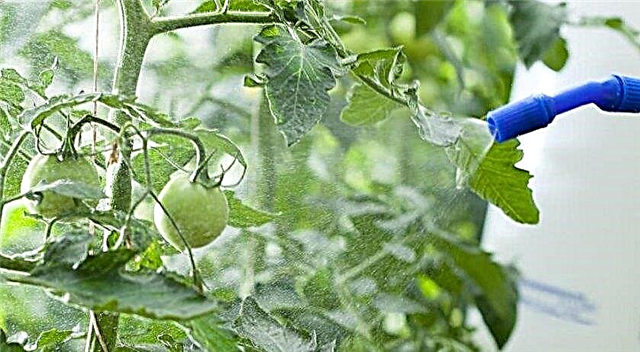
- Decis Expert. Quickly and effectively kills larvae of scoops and many other insect pests. Processing tomato bushes guarantees protection from the scoop for up to two weeks. In 300-400 l of water, 0.1 l of the drug is required to be dissolved. The funds received will be enough to spray a territory of 1 ha. Spraying can be carried out only during the growth and flowering of tomatoes.
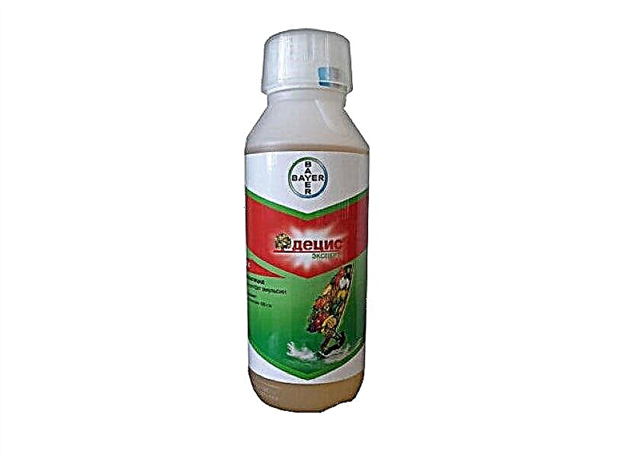
- Inta Vir. The product is soluble in water and is available in the form of tablets or powder. For 10 l of pure water, 1 tablet or 8 g of powder is used. You can combine this drug with other pesticides, provided that they do not have a violent alkaline reaction. Tomato bushes can be sprayed with this tool once every 2 weeks and only during the period of active growth and flowering of plants.
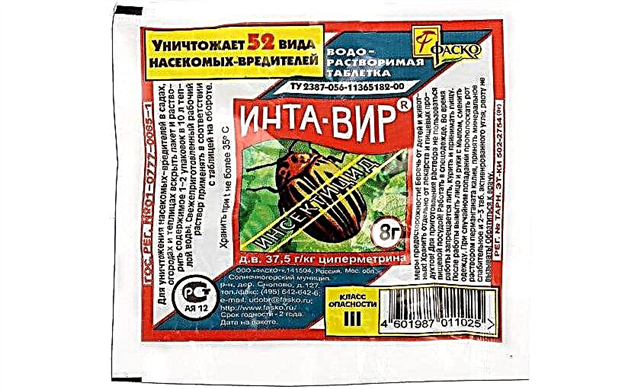
- Spark. The tool is available in the form of tablets. To prepare a suspension, one tablet is dissolved in a small amount of water. Then, about 10 liters of water are added to the resulting mixture. Only 2 liters of the solution prepared according to this recipe can protect a territory of 10 m² from the scoop. Processing of tomatoes is carried out during the growing season. Repeated spraying can be done after 15 days.
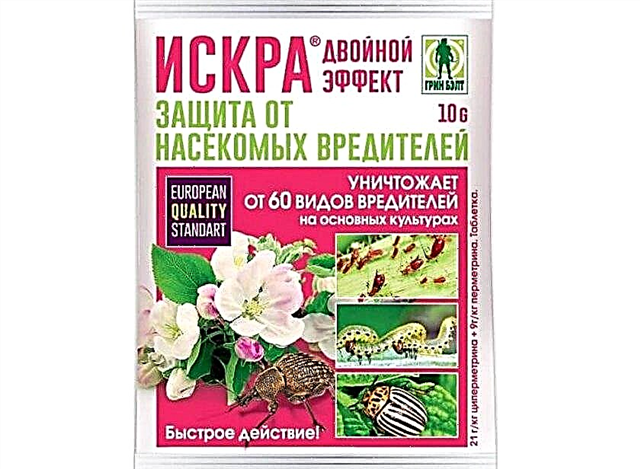
- Lepidocide. It belongs to biological bacterial preparations and is effective in combating all types of caterpillars that destroy leaves. 25–35 g of the product are consumed per bucket. This amount of solution is enough to process two hundred parts with tomatoes. If necessary, processing can be repeated after 7 days.
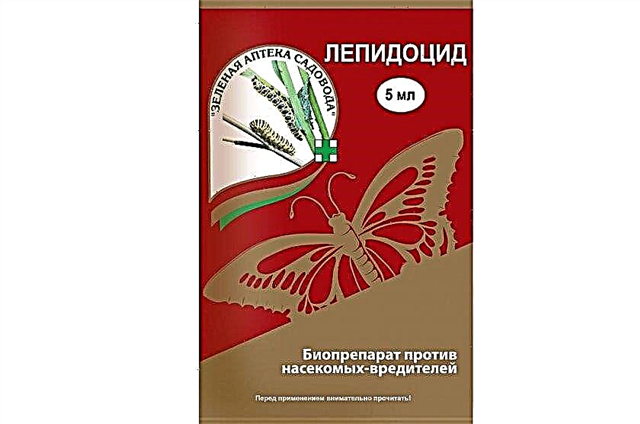
Folk remedies
When eggs or caterpillars of scoops appear on tomato bushes, many gardeners first try to fight the pest with the help of proven folk recipes. They harm only the insect and have no side effects, unlike chemical preparations against scoops.
Did you know? 6 species of scoops are listed in the Red Book of Russia.
List of the most popular folk remedies for scoops:
- Garlic infusion. To prepare it, you need to grind garlic (arrows) in an amount of 500 g, place them in a three-liter jar and pour water to the edges of the container. The solution is insisted for a week, then filtered. To process tomato bushes, 50-60 g of the resulting infusion are mixed with 10 l of water and 50-60 g of grated laundry soap. The resulting agent is sprayed with tomato bushes 2-3 times a month.
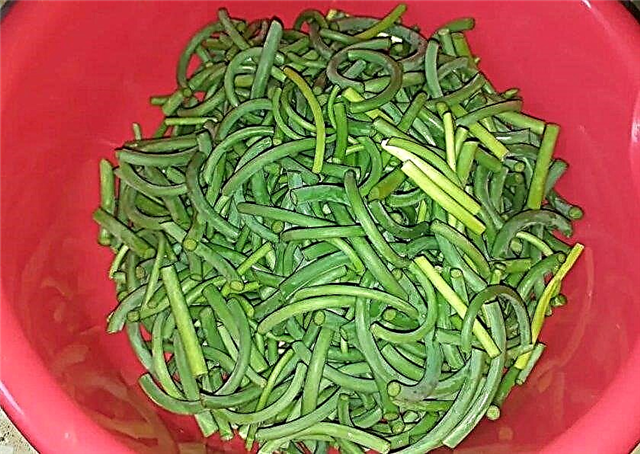
- Wormwood broth. To prepare it, take 700 g of fresh leaves of wormwood and fill them with 5 l of boiling water. The broth is covered with a lid and put in a dark place for several days. The resulting product is diluted with water in a ratio of 1:10 and sprayed with the resulting solution of the plant, on which the pest is found.
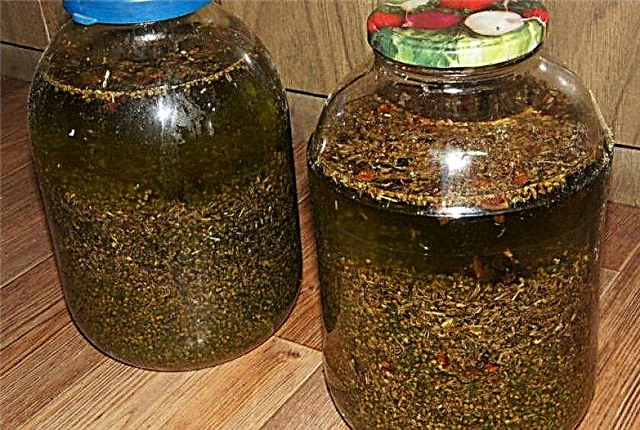
- Manganese solution. It has a wide range of actions - it kills scoop caterpillars, fertilizes the tomato bush and fights the occurrence of bacterial and viral infections of tomatoes. For processing plants, prepare a glass of dark potassium permanganate solution, which is then mixed with a bucket of clean water. The resulting product is sprayed with bushes.
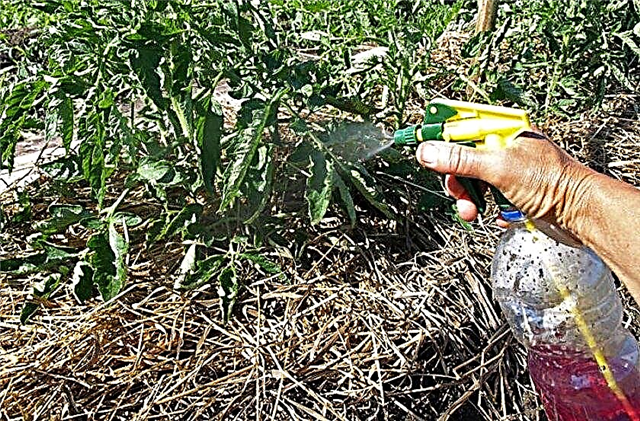
- Infusion of shag, tobacco, wormwood and celandine. All of these ingredients are taken in quantities of 80 g, mixed with 180 g of chopped garlic and pour 10 l of hot water. The resulting mixture is infused for 24 hours, and before processing the plants add a quarter of the bar of laundry soap, grated. After spraying tomato bushes with this tool, the caterpillars of the scoop quickly die.

- Kerosene solution. For cooking, you need to take 700 ml of kerosene and 350 g of grated laundry soap. Soap is dissolved in 1 liter of hot water and a fine stream is poured into the resulting mixture of kerosene. Then add another 9 liters of water to the solution, mix thoroughly and process the tomato bushes.

Additional tips
The timely use of chemicals or home recipes to get rid of the tracks can give a good result.
Here are a few more useful tips to help make the fight with the scoop more effective:
- when processing tomato bushes with chemical agents, it is necessary to clearly follow the instructions on the packaging;
- observe the timing of repeated treatments of tomatoes, on average, the interval between sprayings is from 7 to 14 days;
- chemicals against pests are used only during the growth and flowering of tomatoes or the formation of ovaries;
- to destroy the caterpillars hidden in the ground during the day, they regularly cultivate the soil between rows of tomatoes;
- if a small number of pest eggs are found on the leaves of plants, then they can be carefully collected manually until the caterpillars appear.
Important! To combat the scoop during the ripening and harvesting of tomatoes, only folk remedies are used.
Preventive measures
Preventing the appearance of a pest in the garden is much easier than then waging a long struggle with it.
The main preventive measures include:
- regular examination of leaves and stems of tomatoes for eggs or caterpillars;
- thorough removal of weeds from the garden in order to reduce the amount of feed for pests;
- Autumn and spring digging of the soil leads to the death of pupae;
- planting calendula, basil or cilantro near a site with tomatoes will scare away the pest;
- destruction of plants and fruits damaged by caterpillars.
Video: How to get rid of a scoop on tomatoes
For a successful fight with a tomato scoop, it is necessary to identify the pest on the site in time and take the necessary actions to destroy the eggs and larvae. Combining folk recipes and ready-made chemicals, you can get rid of the voracious scoops and save the tomato crop.




















